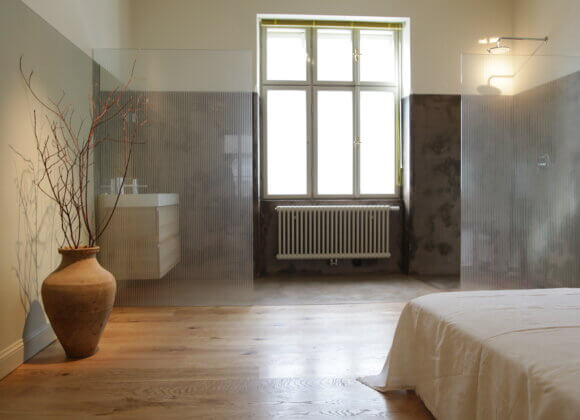You can’t hear it, you can’t see it and you can’t smell it – and yet electrosmog is omnipresent. We found out what it actually means, whether electrosmog is harmful and, of course, how it can be reduced.
What is electrosmog?
The term “electrosmog” is used colloquially for all artificially generated electrical, magnetic and electromagnetic fields. However, unlike “normal” smog, which is air pollution caused by emissions, electrosmog is not visible.
When does electrosmog occur?
Electric fields are generated around all devices that are connected to the power grid, as well as around the supply lines – regardless of whether the devices are in operation or in standby mode. As soon as they are in operation and therefore consume electricity, magnetic fields are also generated. In addition to electrical appliances and the power supply in the home, other sources of this type of electrosmog include high-voltage power lines, transformers and underground cables. Incidentally, electric and magnetic fields also occur in nature, for example in thunderclouds, lightning and in the earth’s static magnetic field.
In addition to the low-frequency electromagnetic fields just mentioned, there are also high-frequency electromagnetic fields that also generate electrosmog. Sources include radio transmitters, mobile phone masts and cell phones, but also microwave ovens or the base stations of cordless radio telephones according to the DECT standard.
Which devices in your own four walls actually generate electrosmog?
Almost all devices with plugs or power supply units, whether switched on or in standby mode, generate electrosmog, as already mentioned. In addition to the devices already mentioned, this also includes induction stoves, tablets, headsets, televisions, radios, power-operated (radio) alarm clocks and baby monitors, WLAN routers and Bluetooth toys, as well as electric blankets and electrically operated slatted frames.
What does electrosmog do to the body – and how dangerous is it?
The most frequently mentioned reactions to electrosmog include headaches, nausea, sleep and concentration disorders, as well as neurodegenerative diseases. However, when it comes to the effects of electrosmog on the body and the associated risks, there are still many unanswered questions. Two effects have been scientifically proven so far: On the one hand, that low-frequency electric and magnetic fields actually have stimulating effects on sensory, nerve and muscle cells and can trigger muscle cramps or cardiac fibrillation, for example. The second is that high-frequency electromagnetic fields can have a thermal effect on the human body under certain circumstances.

How can you measure electrosmog?
There are now various measuring devices and apps for measuring electrosmog. However, experts such as the German Federal Office for Radiation Protection point out that these only provide rough measurements and are therefore not suitable for professional measurement tasks. Meaningful measurements can therefore usually only be carried out by experts with the appropriate devices.
How can you protect yourself from electrosmog?
One of the most important factors in protecting yourself from electrosmog is the responsible use of electrical appliances. This applies in particular to the bedroom, as a good night’s sleep is essential for overall well-being.
- Electric and magnetic fields decrease rapidly with increasing distance from the source. The further away you are from cell phones, tablets, routers, etc., the lower the radiation exposure. The rule of thumb is a distance of one meter for low-frequency fields and 100 meters for high-frequency fields. Speaking of distance: use a headset when making phone calls!
- Disconnect appliances that you are not using from the power supply. Mains isolators reduce the voltage when electrical appliances are no longer in use.
- Avoid electric clock radios. If the risk of oversleeping is too great, the distance between it and your head should be at least one meter.
- Keep your cell phone calls short and switch off background data traffic to reduce stress.
- When building a house or renovating an apartment, make sure that the pipes are laid correctly.
- Use low-radiation electrical appliances.
Related posts:
Sick building syndrome: when buildings make you ill
Switch off and reconnect – the importance of “digital detox”













